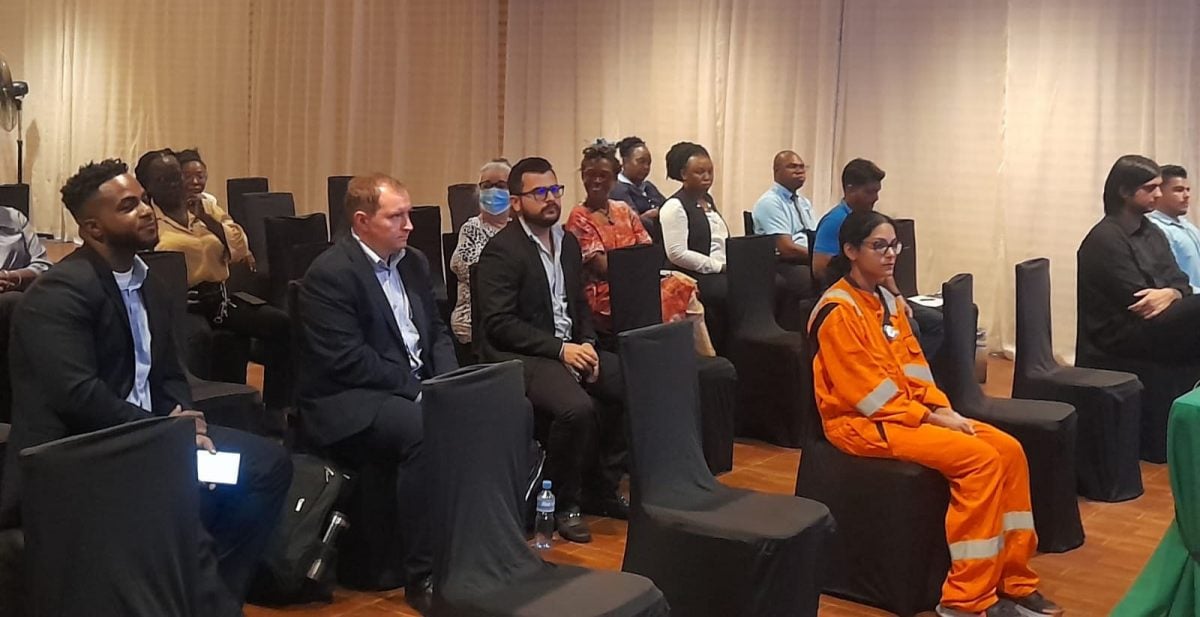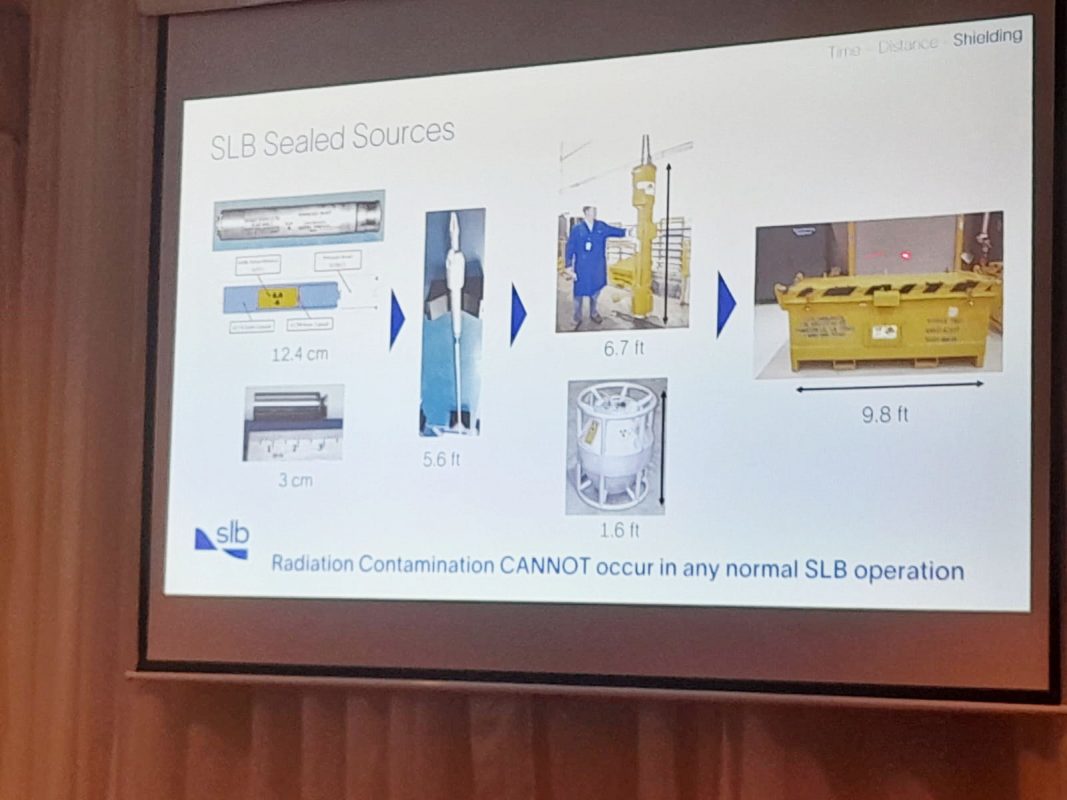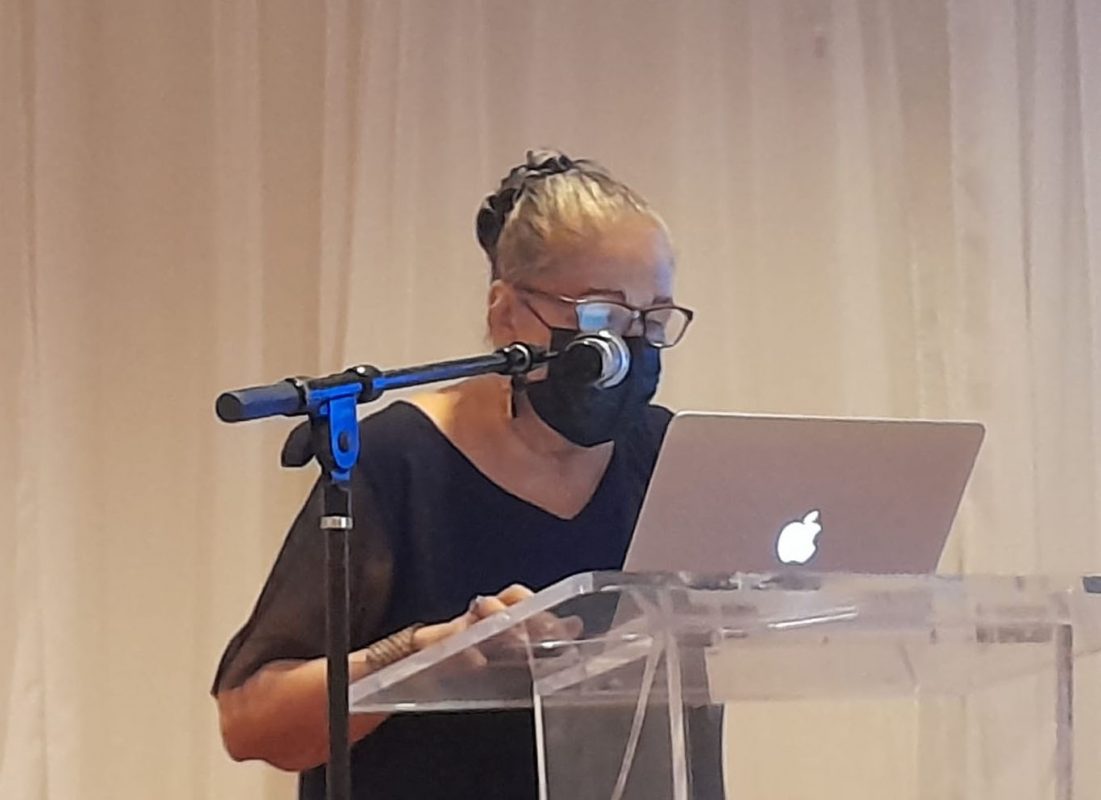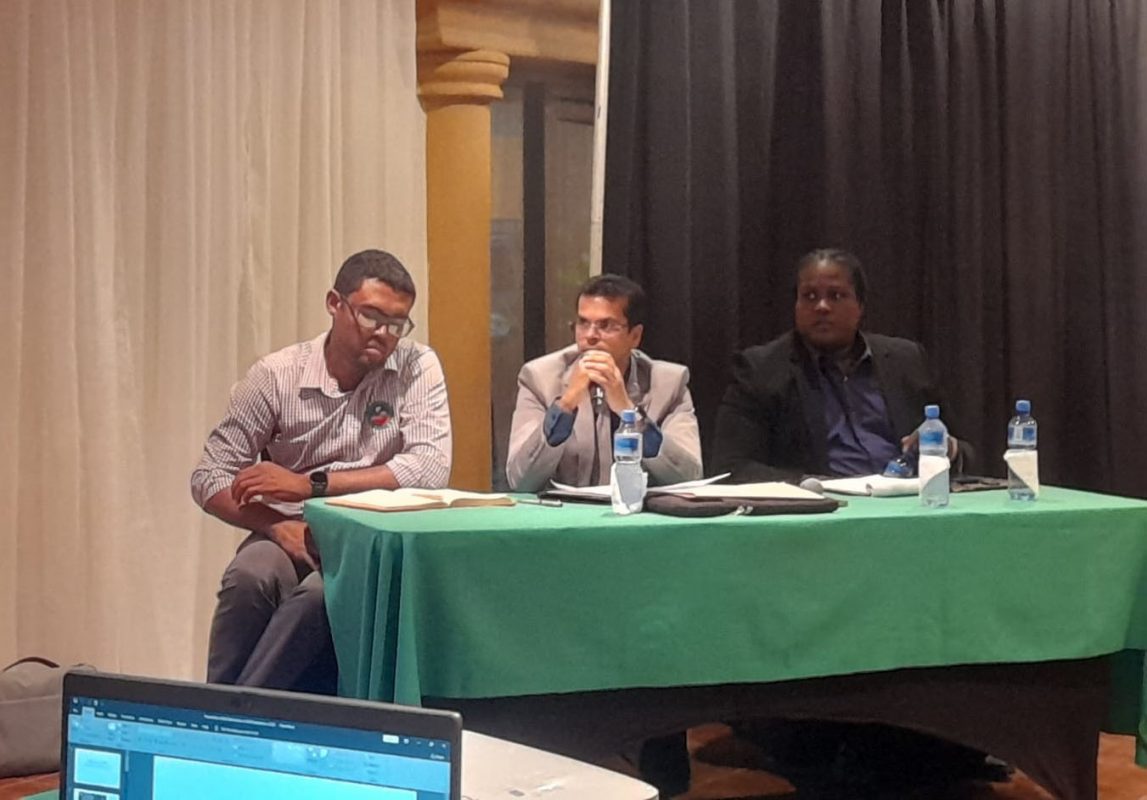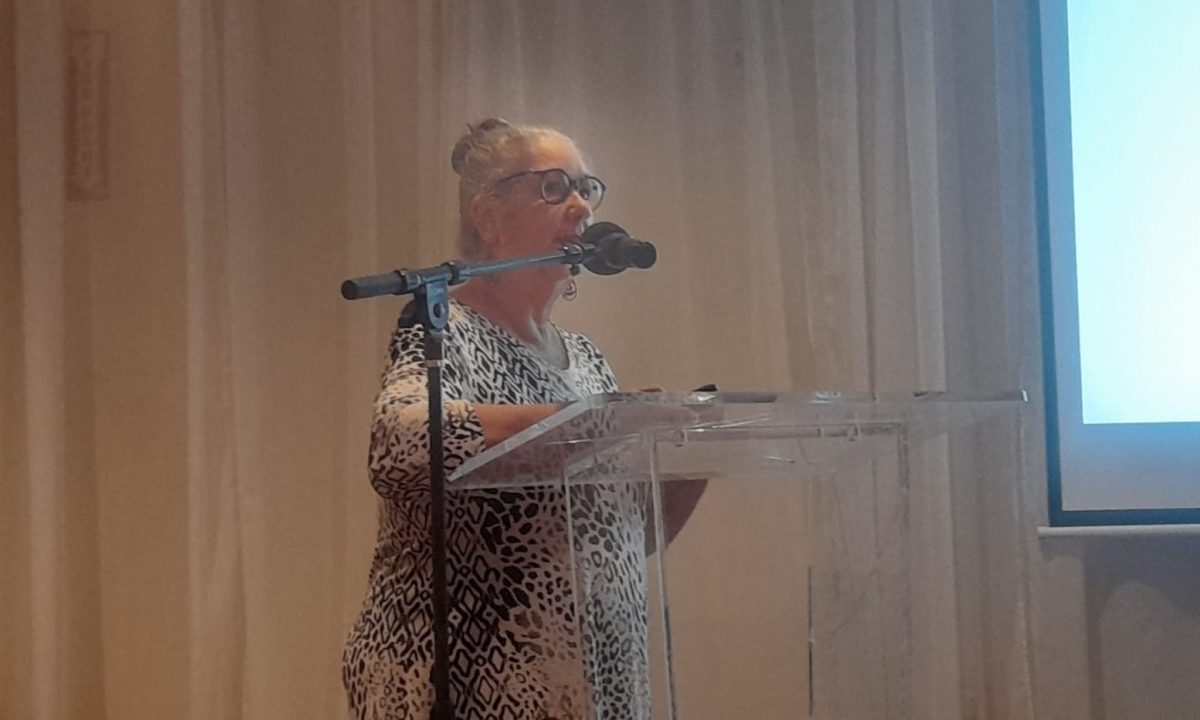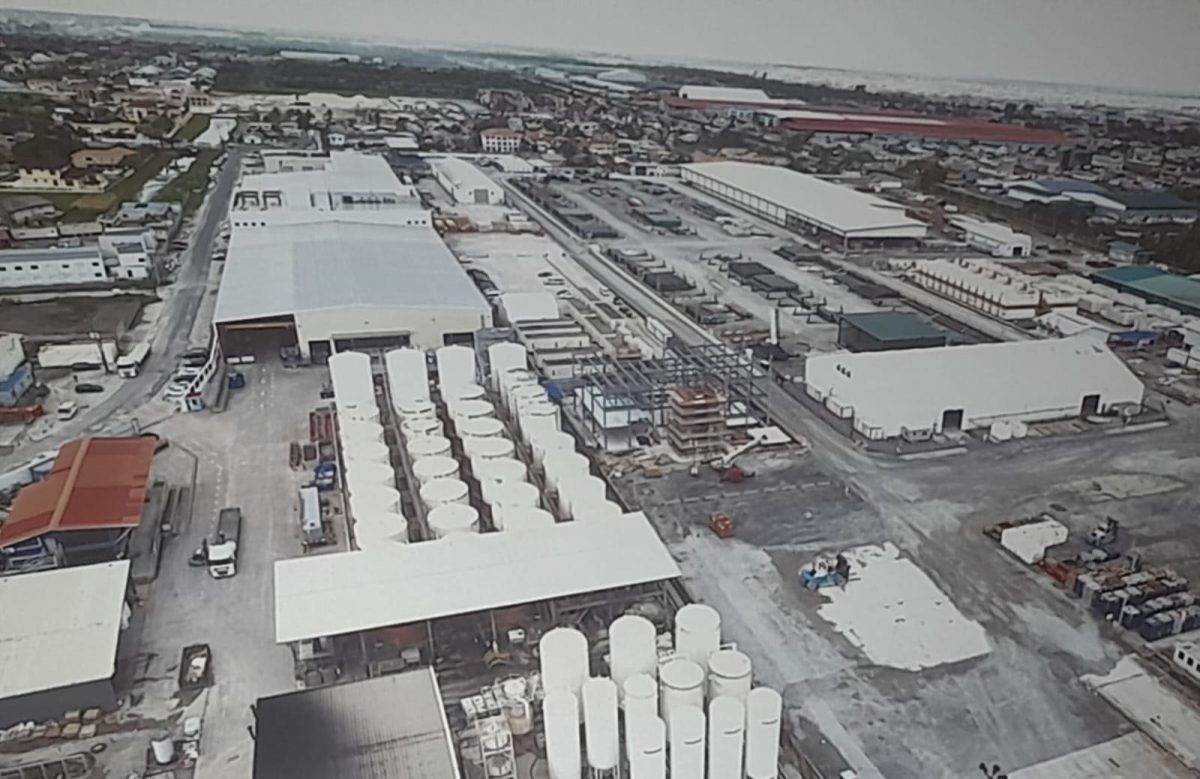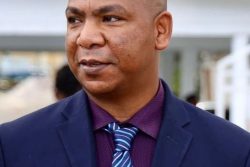The Environmental Assessment Board (EAB) is to make a decision on the way forward in the wake of a public hearing regarding the reapplication by SLB Guyana for an environmental permit to operate a radioactive source storage and calibration facility at Lot 1 Area X, Houston, East Bank Demerara.
At the hearing, held on September 13, representatives of SLB Guyana (formerly Schlumberger Guyana Inc) held out their company as experienced and responsible in pressing for the permit. However, environmental activists and residents of the area argued that an independent environmental impact assessment (EIA) should be carried out before any decisions are made.
Among the points of consideration listed by SLB is that it has been in operation for several decades and has a good track record of handling such materials.
Its representatives also stated that the company has been qualified by international bodies to handle radioactive material and if these are not handled correctly it could lose its licence. They insisted that with strict protocols in place, there would be no level of contamination.
Houston Gardens residents Vanda and Danuta Radzik expressed concern that despite the fact that Guyana did not have a history of dealing with such resources, no EIA was done. Instead, Houston has been now tagged as an industrial site and the plant had been set up and functioning without the consultation of those who lived nearby for years.
They noted that the area where the facility was located was prone to flooding and there was no guarantee against breaches. Concerns were also raised as to the ability of the Guyana Fire Service and the company to handle a fire should one break out.
They asked that the EAB examine the track record of the company’s mishandling of radioactive sources in the past.
The Radziks also pointed out that questions surrounding the importation and movement of sealed radioactive sources including in normal and irregular circumstances for SLB operations had not been answered in a satisfactory way by SLB so clear information and clarity of a really important issue were left hanging. In addition, they noted that there are international protocols that are legally binding for the movement of such sources, and a need to ensure that these are followed in Guyana.
The risk of downhole radioactive tools being lost or abandoned due to loss at offshore well sites, they also noted, had not received any attention even though in the cancelled environmental permit, SLB was required to inform the EPA if tools were lost in this way. This aspect, they stressed, also needs an EIA for risks, impacts and mitigation.
The activists also pointed to the Environmental Protection Agency’s (EPA) lack of radiation expertise (one person at the EPA has one year of training, while all others have only attended short courses within its operations) as very troubling. They noted that an increased number of sealed radioactive sources will be needed in the oil and gas industry and there are potential risks of radiation exposure in case of an accident, loss, or breach of sealed radioactive sources.
The public hearing was attended by EAB Chairman Dr Mahendar Sharma and board members Dr Garvin Cummings and Joslyn McKenzie, SLB representatives, environmental activists, residents and others. It followed a successful court case brought by Houston residents against the EPA after it waived an EIA and granted an environmental permit for the operations of the company under its former name Schlumberger, in June 2021. After the High Court verdict in December 2022, which effectively quashed that permit, the company reapplied to the EPA, which in April this year, again waived an EIA and residents appealed. Under Section 18(2) of the EPA Act, Cap.20:05, Laws of Guyana, the EAB is mandated to conduct public hearings into all appeals submitted against an EPA decision not to require an EIA for the project.
The plan by SLB is to have several facilities in its Houston Complex that will store and facilitate the transport of sources. These sources are used in the oil and gas sector and as such, are expected to be transported to production sites off-shores.
The sources will be stored in 19 pits underground, with 300-millimetre-thick concrete walls, and for secondary protection, a six-millimetre carbon steel casing, above flood water levels, and sealed with a heavy steel cap that has to be lifted with a heavy-duty machine.
